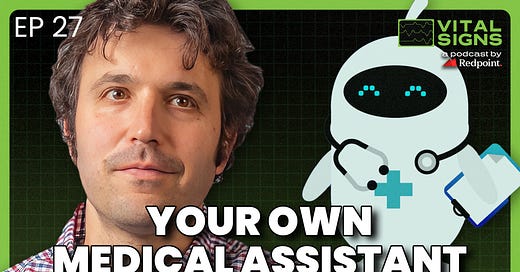The Future of AI In Medical Diagnosis: In Conversation With PathAI CEO Dr. Andy Beck
For our second crossover episode between Vital Signs and Unsupervised Learning we explored the impact of AI on pathology with PathAI Co-Founder and CEO Dr. Andy Beck.
Andy talked about his journey studying both pathology and computer science throughout his MD and PhD programs, as well as how advances in computer vision created the opportunity to start PathAI (last valued at close to $1B). We also hit on why Path acquired their own lab and how larger foundation models have changed their products. You can listen to the full conversation on Spotify and Apple, watch the episode on YouTube or read the highlights below.
⚡ Highlight 1: Starting with pharma
Andy explained why he targeted pharma when first starting PathAI.
“Certain large companies spend over $10 billion on research and development. So it's incredibly important that they understand why patients in trials are responding, or failing to respond, to therapies to get the most value out of these trials, and to help them provide the basis of data for designing either later stage trials for programs that are continuing, or new combinations or new sets of trials.
That was one area where there was clearly a real need and that our technology could really deliver, because it is fundamentally a machine learning problem. We have this set of data where we have treatment on every patient, outcome on every patient, and pathology images on every patient. How do you use the images to predict the treatment response? And how can you use that to identify novel biomarkers or novel patient subsets? That was a really great place for us to start.”
⚡ Highlight 2: Changing drug discovery
Andy further elaborated where these tools could accelerate the drug discovery process.
“It's really discovering new biomarkers, discovering new subsets of patients, using this technology. We're at the very early stages there as well. I see a future where this technology is being used to discover many new important patient subsets who will benefit from specific therapeutic interventions. This technology will be used for discovery, and then new biomarkers, new companion diagnostics. But that's all still quite early.”
⚡ Highlight 3: The future of pathology
“I definitely think the future job of the anatomic pathologist is you're not going to end with the H&E stain and the IHC stain, you'll be augmenting the H&E with AI, you'll be augmenting the IHC with AI. The pathologist will be sitting down in front of a monitor that will have a sophisticated AI system that looked at the patient's medical history, looked at the medical literature, looked at what's going on in the image, and made a set of different recommendations, each with different potential trade-offs. This is what I think the diagnosis is, this is what I think the best treatment recommendation is. And then I think the pathologist's job really will be a lot more higher level judgment, data integration, thinking through these different recommendations.”



